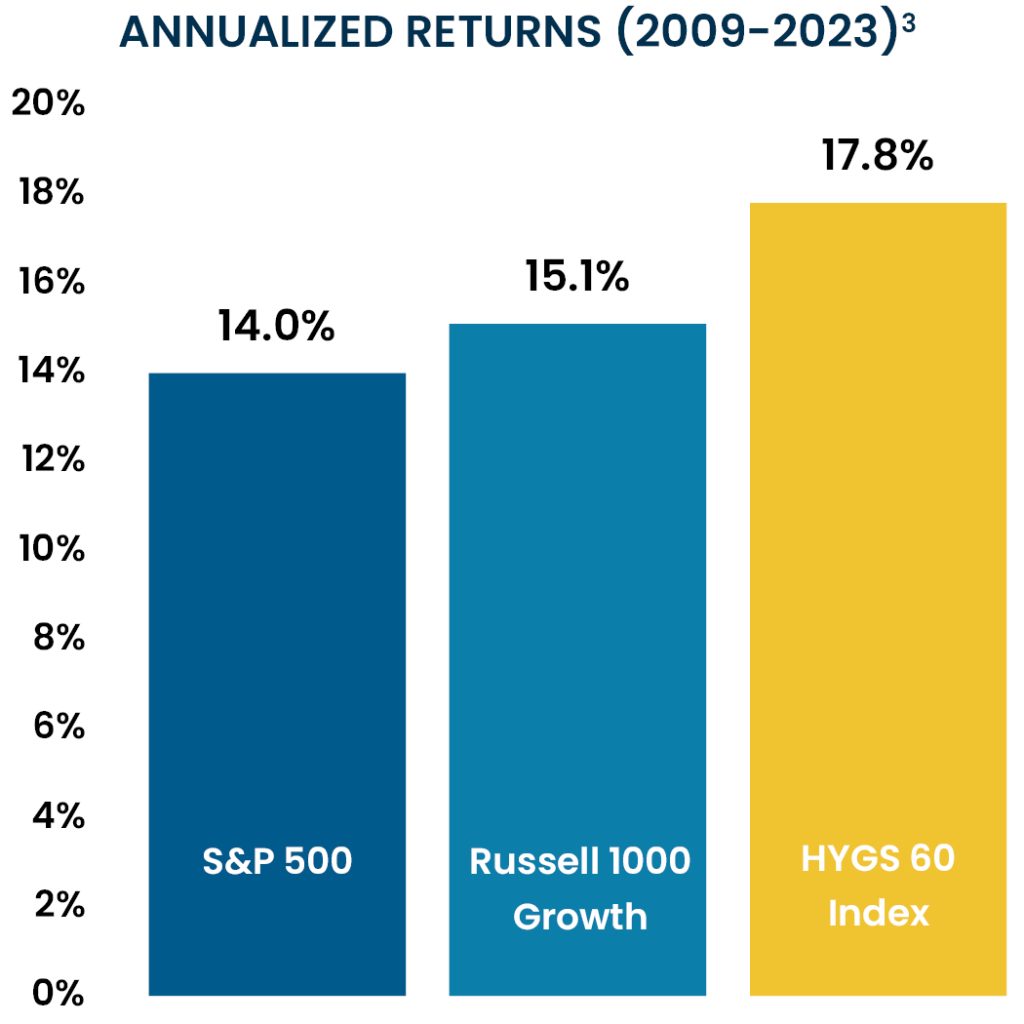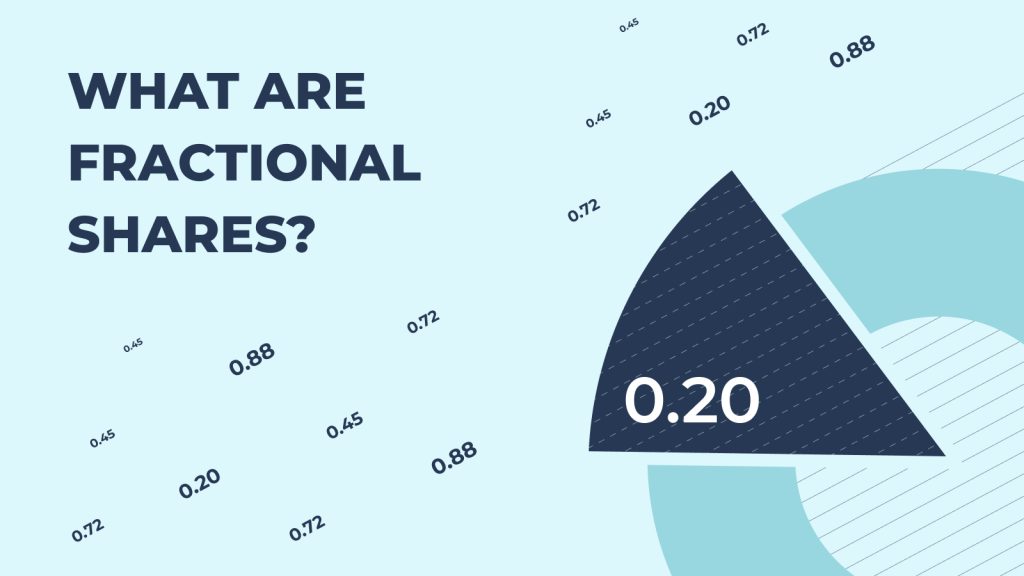By Robert Zuccaro, CFA
The Hypergrowth Stock concept was introduced in the Harvard Business Review in 20081 after a Harvard professor noted that certain companies of size were able to scale up their sales at never-before-seen growth rates. For example, Google boosted its sales from $1.5 billion in 2003 to nearly $22 billion in 2008. During the same time span, Apple’s sales went from $6 billion to $38 billion. The professor then defined hypergrowth companies as those companies which produced sales growth of at least 40% over four consecutive quarters.
Intrigued by the hypergrowth concept, Golden Eagle Strategies, LLC (“Golden Eagle”) eventually went on to create the first Hypergrowth Growth Stock Index keying off a study that was done on earnings growth for the period of 1985-2000. This study covered 1,076 stocks which were analyzed by degree of annual earnings growth correlated to annual price change for each stock in the study.
For companies which increased their earnings by 20-50% in any year, the average yearly return was 39%. For those companies that expanded their earnings by 100% or more in a year, the average annual return jumped to 114%. This study demonstrated that “the faster the growth, the better the stock.” It also would lead to research on Hypergrowth Stocks many years later.
Golden Eagle conducted a subsequent study on the top performing stocks over ten-year periods during 2015-2019, stocks that generally went up in price by 1,000-5,000%. Our study revealed that 53% of the top stocks started their runs while losing money. Surprisingly, 24% of them were still losing money at the conclusion of their 10-year period.
Wall Street has great difficulty in evaluating money- losing companies by being wed to price-to-earnings ratios. Many investors shy away from money losing companies fearing that they could go bankrupt. However, avoiding money losing companies means missing out on many of the biggest winners in the stock market. For example, Tesla lost money in its first 10 years as a public company. During its unprofitable years, its stock shot up 1,652%. Live Nation lost more than $3 billion over 15 years; its stock went up 1,985% during this unprofitable period.
Money losing companies can often offer high rewards. With this in mind, Golden Eagle shifted its focus from earnings to sales in evaluating stocks when it introduced its Hypergrowth Stock strategy in 2020. All companies have sales, but not all companies have earnings. The sales metric is far more stable than the earnings metric. It is possible for a company to record a hypergrowth sales rate in one quarter and report negative earnings growth because of accelerated spending. The use of the sales metric allows us to capture the full gamut of high potential stocks.
Golden Eagle, in its initial study on Hypergrowth Stocks separated the full spectrum of growth stocks into three different classes by sales growth rates which demonstrates that “price follows sales” as shown below.


First, it can be observed that all growth stock classes outperformed the S&P 500. Next, it can be seen that Hypergrowth Stocks produced the highest returns among all growth classes. It should be noted that the above data were compiled looking backwards at the end of each year which means that the implied returns were unattainable. Aware of this shortcoming, Golden Eagle went on later to create an investible Hypergrowth Stock Index.
Dubbed the Hypergrowth Stock 60 Index (HYGS 60), each stock in the index had to have exhibited sales growth of at least 40% in its latest reported quarter to be included in this index. The number of Hypergrowth Stocks coming through our screens since 2009 has varied between 44 to 520 on a monthly basis, depending upon business conditions. The Top 60 were selected for the HYGS 60 Index according to our ranking system based on new high stock pattern.


Golden Eagle believes that most of the answer to any good stock lies in its stock price. In turn, we have researched and written on the “New High Stock Effect” which shows that stocks trading within 25% of their last new high tend to rise 0.69% on average in the following month. On the other hand, stocks trading more than 25% away tend to go down in price. These findings are incorporated into the construction of our HYGS Index using a limit of 60 stocks which are ranked in descending order of closest percentage proximity to last new high.
The performance of the HYGS 60 over the past 15 years in comparison to the Russell 1000 Growth and S&P 500 Indexes is shown in the chart on the right. The HYGS 60 Index is rebalanced at the end of each month.
The evidence shows that the Hypergrowth Stock asset class offers an opportunity for superior returns versus other alternatives of investment. This asset class is hidden from most investors because it is under-researched and under-owned. Finally, it is the gem among all growth stock classes.
www.goldeneaglestrategies.com
Golden Eagle is a boutique investment firm that specializes in growth equities. Our cutting-edge research, conducted over 40+ years seeking to identify the “common characteristics of top performing stocks”, has demonstrated time and time again that the highest growth leads to the highest returns. Today, we exclusively invest in Hypergrowth Stocks.
1 Article from Harvard Business Review article April 2008 https://hbr.org/2008/04/managing-hypergrowth
2 Data is based upon internal research complied by Golden Eagle and is the latest available data as well as S&P 500 Total Return
data is from Yahoo Finance. Additional details are made available upon request.
3 Data is based upon internal research complied by Golden Eagle and is the latest available data as well as S&P 500 Total Return
data is from Yahoo Finance. Additional details are made available upon request.


















